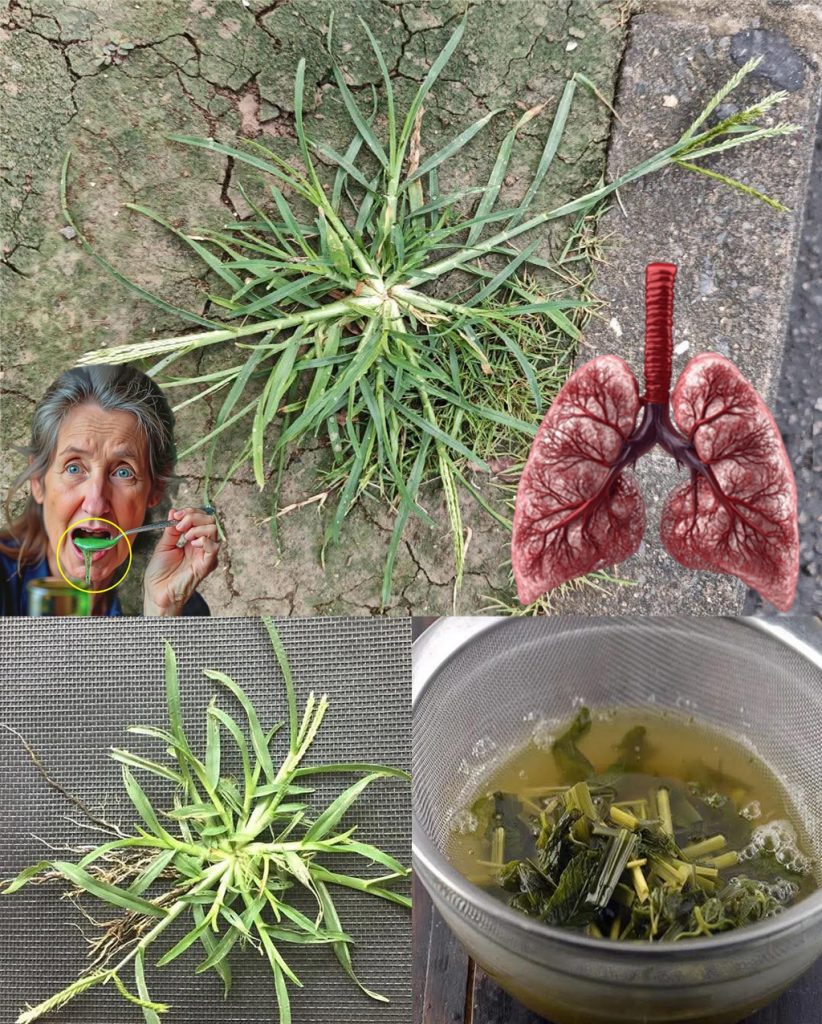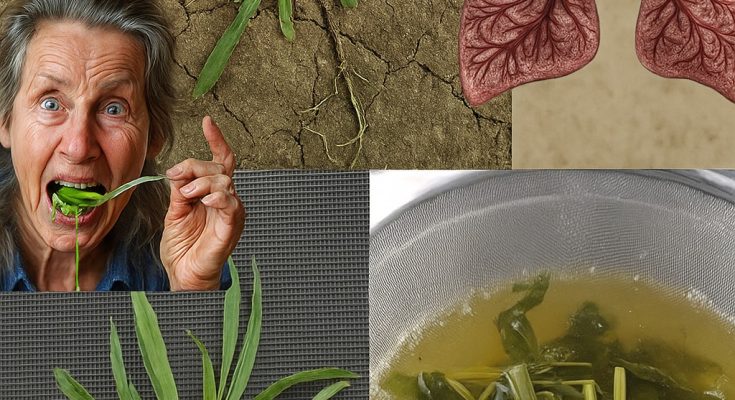What if the clingy weed snagging your clothes on a hike was a medicinal marvel? Goosegrass (Galium aparine), also known as cleavers, stickyweed, or stickywilly, is a common annual herb often dismissed as a nuisance but cherished for centuries in traditional medicine across Europe, Asia, and North America. With its Velcro-like hooks, slender stems, and whorled leaves, this plant is packed with flavonoids, tannins, vitamin C, and asperuloside, offering a range of health benefits from detoxification to skin healing. Free to forage and easy to use, goosegrass is a sustainable, budget-friendly remedy that rivals costly supplements. Ready to uncover 7 remarkable benefits and learn how to use goosegrass safely? Let’s dive into this vibrant guide and embrace nature’s sticky treasure!

Goosegrass thrives in moist, shady areas—hedgerows, fields, and gardens—across temperate regions, growing 1–4 feet tall with sticky, whorled leaves and tiny white flowers (web:0, web:9). Native to Africa, Asia, and Europe, it’s naturalized in the Americas and Oceania, often called “cleavers” for its clinging hooks (web:1, web:17). Rich in vitamin C (high but unquantified in leaves), flavonoids, tannins, and asperuloside, it offers diuretic, anti-inflammatory, and antioxidant properties, as noted in a 2018 PMC review (web:13). Used by ancient Greeks for weariness and Native Americans for skin issues, its benefits are backed by emerging science (web:4, web:10). Let’s explore 7 health benefits and safe uses, complementing nutrient-dense plants like Lamb’s Quarters (memory: August 06, 2025).
Goosegrass’s diuretic properties promote lymphatic drainage, flushing toxins and reducing swelling in lymph nodes or edema, as used in traditional European remedies (web:9, web:15). Its asperuloside supports detox (web:8).
How to Use: Steep 1–2 teaspoons of dried leaves in 1 cup of hot water for 10–15 minutes. Drink 1 cup up to three times daily for 1–2 weeks (web:15, post:6).
As a potent diuretic, goosegrass relieves urinary tract infections (UTIs), cystitis, and fluid retention by flushing bacteria and toxins, per a 2024 mendzone.in article (web:9, web:14).
How to Use: Boil a handful of fresh leaves in 2 cups of water for 10 minutes, strain, and drink ½ cup twice daily for 5–7 days (web:1, post:6).
Flavonoids and tannins reduce inflammatory markers, easing arthritis, joint pain, and skin inflammation, as noted in a 2019 Biomedicine & Pharmacotherapy study (web:14).
How to Use: Apply a poultice of crushed fresh leaves to inflamed joints or skin for 15 minutes, 2–3 times weekly (web:0, web:17).
Its astringent and antimicrobial properties treat psoriasis, eczema, acne, and minor wounds, as used historically to relieve burns and ulcers (web:4, web:17).
How to Use: Soak a cloth in a cooled infusion (1 tablespoon dried leaves in 1 cup water) and apply to affected skin for 10–15 minutes, twice weekly (web:1, web:16).
High vitamin C content and antioxidants enhance immune function, fighting colds and flu, per traditional uses for scurvy prevention (web:0, web:9).
How to Use: Blend ½ cup of fresh, young shoots into smoothies or salads, 2–3 times weekly (web:1).
Goosegrass’s expectorant properties clear mucus, easing coughs, bronchitis, and colds, as noted in herbal traditions (web:15).
How to Use: Drink 1 cup of leaf tea (1 teaspoon dried leaves) daily for 5–7 days to relieve congestion (web:15).
Young shoots and seeds are rich in vitamin C, fiber, and minerals, offering a nutritious addition to diets, used historically as a famine food (web:0, web:4).
How to Use: Boil ½ cup of young shoots for 5 minutes, season with olive oil or butter, and serve as a side dish, 2–3 times weekly (web:0).
Goosegrass is versatile but requires careful preparation due to its sticky texture and diuretic potency:
Goosegrass Tea:
- Steep 1–2 teaspoons of dried leaves or a handful of fresh leaves in 1 cup of hot water for 10–15 minutes. Strain thoroughly (web:15).
- Drink 1 cup up to three times daily for 1–2 weeks for detox, urinary, or respiratory support. Add honey to mask mild bitterness (web:9, post:6).
Cooked Greens:
- Boil ½ cup of young shoots (spring harvest) for 5 minutes to soften hooks. Add to soups, stir-fries, or omelets, 2–3 times weekly (web:0, web:1).
Poultice:
- Crush a handful of fresh leaves into a paste. Apply to skin irritations, wounds, or joints for 15 minutes, rinsing thoroughly, 2–3 times weekly (web:17).
Coffee Substitute:
- Roast ripe seeds at 300°F for 10–15 minutes, grind, and brew like coffee (1 teaspoon per cup). Drink daily for a nutrient boost (web:0, web:4).
Safety Note: Harvest young leaves from pesticide-free areas (e.g., organic gardens) in spring for milder flavor. Identify Galium aparine by its sticky, whorled leaves and tiny white flowers, avoiding look-alikes like Galium spurium (less sticky, rarer) (web:0, web:17). Wash thoroughly to remove dirt (web:9).
-
- Allergy Test: Chew a small leaf or apply paste to your inner wrist and wait 24 hours to rule out sensitivities, as rare contact dermatitis may occur (web:1, web:16).
- Moderate Use: Limit tea to 1–3 cups daily for 1–2 weeks to avoid dehydration or low blood pressure from diuretic effects (web:9). Take a 1-week break (web:15).
- Medication Interactions: May enhance diuretics, blood pressure, or diabetes drugs, risking low potassium, hypotension, or hypoglycemia. Consult a doctor if on medications (web:16, memory: August 06, 2025).
- Diabetes Caution: Monitor blood sugar closely, as goosegrass may lower glucose (web:16).
- Pregnancy/Breastfeeding: Safe in food amounts (½ cup daily) but avoid medicinal doses due to limited data (web:17).
- Not a Cure-All: Supports health but doesn’t treat serious conditions like UTIs or cancer. Seek medical diagnosis for persistent symptoms (web:14, web:21).
- Harvest Young: Pick tender shoots in spring (March–April) for best flavor and nutrients (web:0).
- Combine Synergistically: Pair with dandelion or nettle in tea for enhanced detox effects (memory: August 06, 2025).
- Store Smart: Refrigerate fresh leaves in a damp cloth for 3–5 days, or dry for 6 months in airtight jars (web:9).
- Eco-Friendly Use: Harvest to control its invasive spread, supporting native plants (web:0, web:15).
- Track Effects: Monitor urinary, skin, or respiratory improvements in a journal (web:14).
- Nutrient-Dense: High in vitamin C and flavonoids, rivaling spinach (web:0).
- Affordable: Free if foraged, versus $20–$50 for detox supplements (web:9).
- Versatile: From teas to poultices, fits any lifestyle (web:1).
- Backed by Tradition: Used since ancient Greece, with emerging studies supporting benefits (web:4, web:13).
Consult a healthcare provider if:
- You experience allergic reactions (rash, swelling) or dehydration (web:9, web:16).
- You’re on medications for blood pressure, diabetes, or kidneys (web:16).
- Symptoms persist beyond 1–2 weeks (web:14).
- You’re pregnant or have chronic conditions (web:17).
Goosegrass isn’t just a sticky weed—it’s a wellness wonder, delivering 7 vibrant benefits from detox to skin health. With its rich history and emerging science, this plant transforms your routine effortlessly. Why pull it when you can brew, cook, or apply its magic? Start your goosegrass journey today—your body will thank you!
This article is for informational purposes only and does not replace professional medical advice. Always consult a qualified healthcare provider before making changes to your health routine, especially if you have existing conditions or are taking medications.



